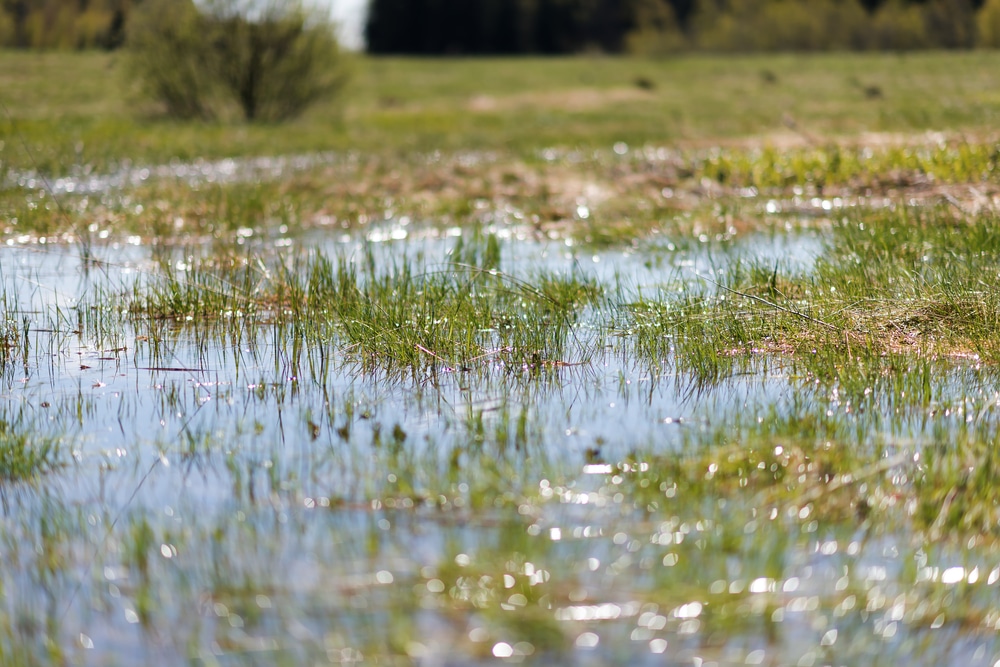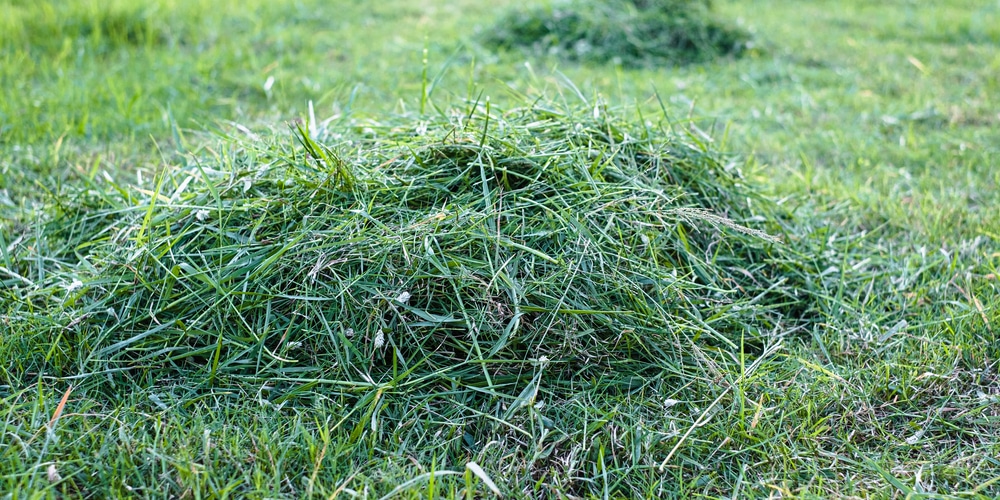Overview of Salt-Tolerant Grass Seeds
When landscaping in coastal areas, choosing the right grass seed becomes critical due to the unique environmental stresses, particularly salt exposure.
Importance of Salt Tolerance in Coastal Areas
- High Salinity: Coastal soils often have high salinity levels due to seawater spray and saltwater intrusion. These can inhibit the growth of typical grass varieties.
- Stressful Conditions: Grass in coastal areas must withstand both salty soils and occasional salt spray. This makes salt tolerance not just beneficial, but essential for a healthy and sustainable lawn.
Characteristics of Salt-Tolerant Grass Varieties
- Deep Root Systems: Many salt-tolerant grasses develop deep roots, reducing their exposure to salty surface conditions and helping them find fresher water sources below.
- Leaf Structure: These grasses may have specialized leaf structures that help them manage and expel excess salt, preventing accumulation that could harm the plant.
By selecting grass varieties with these adaptive traits, your coastal garden or lawn can thrive despite the challenging conditions. You can explore options like Drought Tolerant Grass Seed and Salt Tolerant Seed Mixtures for robust coastal turf solutions.
Best Varieties of Salt-Tolerant Grass for Coastal Areas
Selecting the right grass type for coastal areas is vital to ensure your lawn thrives despite the challenging conditions. Salinity can significantly affect a lawn’s health, but these grass varieties offer robust solutions for beautiful and resilient coastal lawns.
Tall Fescue
- Adaptability: Tall Fescue grass is well-suited for coastal climates due to its deep root system, providing drought resistance and salt tolerance.
- Growth: This grass thrives in full sun to partial shade, making it versatile for various coastal garden designs.
Bermuda Grass
- Durability: Bermuda Grass stands out for its exceptional wear resistance and ability to heal quickly, making it ideal for high-traffic coastal areas.
- Maintenance: It requires minimal care once established and can withstand hot, salty conditions commonly found in coastal regions.
Seashore Paspalum
- Eco-Friendliness: Seashore Paspalum is highly regarded for its environmental tolerance, requiring less water and tolerating reclaimed water irrigation.
- Salt Tolerance: It has excellent salt tolerance, making it an optimal choice for seaside landscapes or areas with saline soils.
How to Grow Grass that Wins in These Areas
Successful cultivation and maintenance of salt-tolerant grasses depend on proper soil preparation, precise seeding and fertilization techniques, and effective water management strategies to mitigate salt stress.
Soil Preparation for Salt-Tolerant Grasses
- Test Soil Salinity: Before planting, conduct a soil test to determine the salinity level. This helps you understand whether the salt concentration is within the tolerable range for your chosen salt-tolerant grass variety.
- Improve Drainage: Ensure proper drainage to prevent salt accumulation in the soil. Amending the soil with organic matter can boost its structure and drainage capabilities.
Seeding and Fertilization Techniques
- Timing: The best time for seeding is during the grass’s peak growth period, which for most salt-tolerant species is late spring to early summer.
- Method:
- Broadcast the seed evenly across the prepared soil.
- Lightly rake the seeds into the soil for good seed-to-soil contact.
- Fertilization:
- Use a starter fertilizer high in phosphorus at the time of seeding.
- Follow up with nitrogen-based fertilization as needed, according to the results of your soil test.
Water Management and Salt Stress Mitigation
- Irrigation Practices: Water deeply but infrequently to encourage deep root growth, which is essential for helping grass resist salt stress.
- Salt Flushing: Leach the soil periodically with fresh water to flush away salts, particularly if you notice signs of salt burn like leaf tip yellowing.
Common Issues
Coastal areas present unique challenges for your lawn due to salt exposure. The proper management of pests and diseases, along with effective repair and renovation strategies, is crucial for maintaining healthy, salt-tolerant grasses.
Managing Pests and Diseases in Saline Environments
- Choose Resistant Varieties: Opt for grass species known for their resilience against common pests and diseases in high-salinity conditions. St. Augustinegrass and zoysia, for example, show robustness in coastal climates, despite not being suitable for irrigation with saltwater.
- Regular Monitoring: Keep an eye on your lawn for early signs of infestation or disease, which can be exacerbated by salt stress. This proactive approach allows for timely interventions.
Preventive Care:
- Maintain soil health with amendments that boost nutrient content and enhance drainage, making it less hospitable for pathogens.
- Apply pest control methods that are suited to saline environments, ensuring they do not exacerbate the salt levels.
Repair and Renovation of Salt-Damaged Lawns
- Assessment:
- Visual Inspection: Check for areas with poor growth or discoloration, indicating salt damage.
- Soil Testing: Conduct a soil test to determine the extent of salt accumulation.
- Renovation Steps:
- Leaching: If the soil test shows high salt levels, irrigate deeply and infrequently to help leach excess salts from the root zone, using quality water with low salt content.
- Reseeding/Replanting: Use a salt-tolerant seed mixture well-suited to repair salt-affected areas, providing better resilience for future exposure.
Ongoing Maintenance:
- Regular watering (with non-saline water) and aeration to improve soil structure and facilitate the removal of salts through leaching.
- Employ a fertilization regimen tailored to the specific requirements of salt-tolerant grasses, as these species may have different nutritional needs compared to their less tolerant counterparts.
Frequently Asked Questions
In this section, you’ll find expert insights into selecting and growing salt-tolerant grasses ideal for coastal environments. Discover how to achieve a verdant, resilient lawn despite the challenges of salty soils.
What are the top-recommended salt-tolerant grass seeds for coastal regions?
- St. Augustinegrass and zoysia are highly recommended for homeowners in coastal areas due to their salt tolerance. They can withstand some salt spray but should not be irrigated with saltwater. For more information, explore details on Salt-Tolerant Lawngrasses.
How does saltwater impact the growth of grass in coastal areas?
- Saltwater can inhibit grass growth by reducing water uptake and causing ion toxicity. This results in osmotic stress and nutrient imbalances in the plants. Only certain types of grasses can withstand these conditions.
Which grass varieties are known for their high salt tolerance in seaside environments?
- Several grasses like Bouteloua curtipendula and Deschampsia cespitosa are recognized for their superior salinity tolerance. See Hoffman Nursery for a more comprehensive list.
What factors should be considered when choosing grass seed for salty soils?
- Salinity level of the soil and exposure to salt spray.
- Climate and the typical weather patterns of the area.
- Soil type and its ability to drain effectively.
Are there any native grasses that can thrive in salty coastal conditions?
- Native grasses naturally adapted to coastal areas can often thrive in salty conditions. Species include Calamagrostis x acutiflora ‘Karl Foerster’ and Carex grayi. For detailed information on salt-tolerant species, check this Guide to Salt Tolerant Grasses & Sedges.
What are some effective methods for establishing a healthy lawn in coastal areas with high salinity?
- Start with choosing the right salt-tolerant grass mix.
- Preparing the soil properly and ensuring good drainage can significantly improve lawn health.
- Regular freshwater irrigation (if possible) to flush out salts may also help.
- For specific grass mixes suited to salty environments, consider the New England Coastal Salt Tolerant Grass Mix.
Last update on 2025-04-26 / Affiliate links / Images from Amazon Product Advertising API





